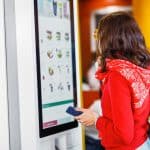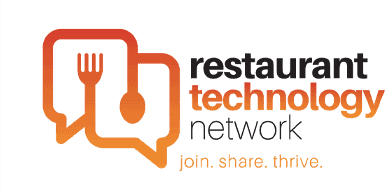The restaurant industry has undergone an unpredicted revolution this year, largely due to the COVID-19 pandemic.
When quarantine regulations locked down the nation in March, restaurants were forced to shutter with little understanding of when they might reopen. Six months later, as lockdowns are lifted, many restaurants are trying to regain their footing.
But customer behaviors aren’t what they once were.
With face mask orders and social distancing restrictions, the concept of a cozy cafe isn’t attracting customers the same way it once did.
Restaurant forecasters predict that the severity of this dining business interruption will only continue as restaurants are allowed to open at limited capacity. But within this new normal, there is plenty that smart small business owners can do to get a leg up right now.
In addition to putting care and compassion first in reassuring staff and customers that their health and safety is paramount, adapting new technologies can be extremely helpful right now.
And today there are more options than ever. From robot waiters to back-of-house digitization tools that provide data-driven insights, the options are endless.
Here we’ll look at four technologies every restaurant will need by the end of 2020:
1. Cloud-based Point of Sales systems
Forget the hardwired and bulky systems—these POS systems live in the cloud, just like, say, your Google docs. Easier to install and significantly cheaper than POS systems of the past, cloud-based POS systems can save restaurants money while allowing for access from wherever you are… yes, even from a smartphone. Plus, if you lose power, you won’t lose your access.
Changes in the POS system also include other benefits such as deeper data and tools to track trends like sales and server performance. With even sharper margins this year, this is information restaurants won’t be able to survive without.
2. Contactless Payment Options
Even if there is a cure for COVID-19 in the next six months, its rollout will reportedly be slow and people are still going to be wary of transmission. And that means the need for contactless payment options isn’t going away any time soon.
That’s why contactless payment solutions are one of the most important innovations helping to keep restaurants afloat. With no guest app required, OneDine easily integrates into most POS systems allowing owners to install contactless payment systems in less than 72 hours.
Smart business owners would be wise to invest in text-to-pay or scan-to-pay contactless payment systems sooner rather than later. Not only will it help customers feel safe now, they’ll learn the technology and will feel more comfortable using it in the future. Plus, brand loyalty is built on trust—protecting your customers’ health and safety will only increase their trust of your restaurant.
3. Online Ordering Tools
Over time, you can save thousands on labor costs by investing in robust mobile menu browsing and online food ordering technology. With online ordering, you can save both your staff’s and your guests’ time by letting customers order from their mobile devices and have their requests sent directly to the kitchen. Customers can be easily notified when orders are complete, and can in turn let the restaurant know they have arrived to pick up their food.
If this system is integrated with contactless payment, there’s no need for money or credit cards to exchange hands. These two technologies used together can greatly improve efficiency, speed, and customer service.
4. Voice Recognition software
While a fine dining restaurant certainly won’t need voice recognition software, a fast casual spot with a drive-up window should definitely consider it. Just as people have come to depend on Alexa for everything from song requests to toothpaste orders, the same applies to restaurant ordering.
Last year, McDonalds announced it was investing in voice recognition. The burger chain acquired start-up Apprente with the intention of rolling out voice recognition at its drive-thru windows. The company has also already installed digital ordering systems inside some stores, further reducing the amount of in-store customer contact.
There are ways to utilize all of these tech tools to improve restaurant service, from the back of house to the hostess stand.
How each works will look different in every establishment. The key is to avoid putting tech improvements on the backburner due to COVID-induced financial hardships, and to see them instead as an opportunity for growth. If you can invest in your business now, you’ll reap the rewards later when the food and beverage industry recovers.





